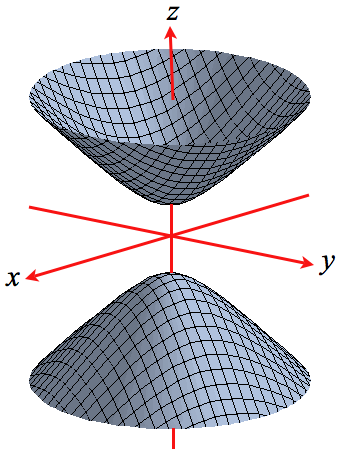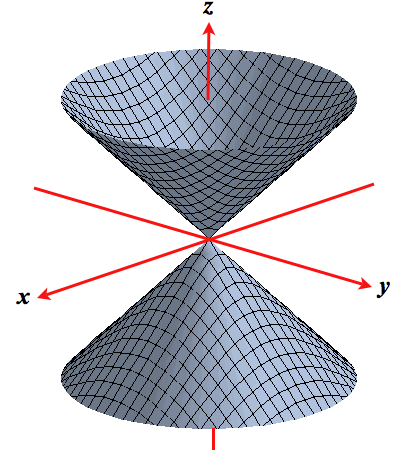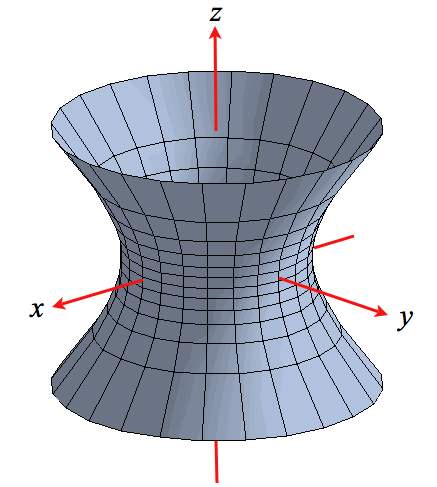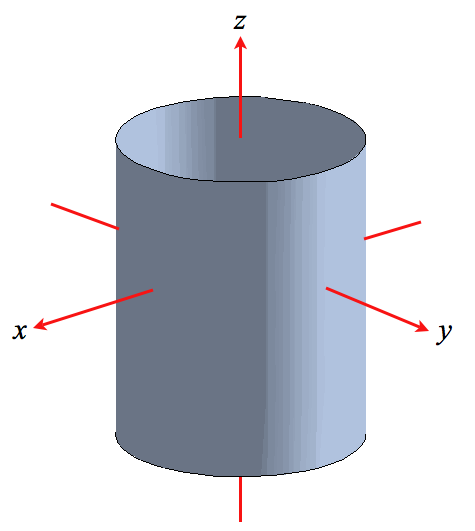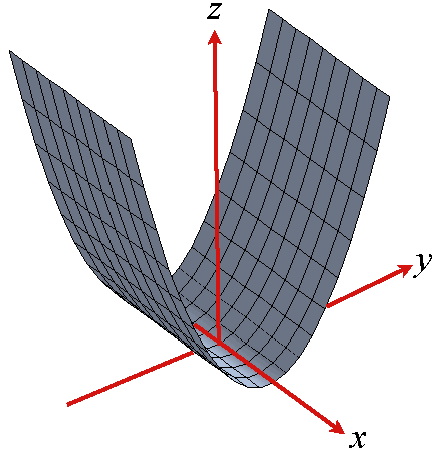Main page
Chapter 10: Parametric Equations and Polar Coordinates
Chapter 12: Vectors and the Geometry of Space
Learning module LM 12.1: 3-dimensional rectangular coordinates:
Learning module LM 12.2: Vectors:
Learning module LM 12.3: Dot products:
Learning module LM 12.4: Cross products:
Learning module LM 12.5: Equations of Lines and Planes:
Learning module LM 12.6: Surfaces:
Surfaces and tracesLevel curves
Level surfaces
Worked problems
Chapter 13: Vector Functions
Chapter 14: Partial Derivatives
Chapter 15: Multiple Integrals
Level surfaces
Now let's step up a dimension and consider functions $w=f(x,\,y,\,z) : U \subseteq {\mathbb R}^3 \to {\mathbb R}$ of $3$ variables; one such function is $${\color{darkerblue} w \ = \ f(x,\,y,\, z) \ = \ x^2 + y^2 - z^2\,.}$$ The graph of every function $w = f(x,\,y,\, z)$ will be a surface in ${\mathbb R}^4$, though it can't be drawn directly; however, slicing horizontally by $w = c$ produces relations $c = f(x,\,y,\, z)$ in $x,\, y,$ and $z$ whose graphs will be surfaces in $3$-space which can be drawn. Formally,
| Level surfaces: For a function $w=f(x,\,y,\,z) :\, U \,\subseteq\, {\mathbb R}^3 \to {\mathbb R}$ the level surface of value $c$ is the surface $S$ in $U \subseteq {\mathbb R}^3 $ on which $f\Bigl|_{S} = c\, $. |
Example 1: The graph of $z=f(x,\,y)$ as a surface in $3$-space can be regarded as the level surface $w = 0$ of the function $w(x,\,y,\,z) = z - f(x,\, y)$.
Example 2: Spheres $x^2+y^2+z^2 = r^2$ can be interpreted as level surfaces $w = r^2$ of the function $w = x^2+y^2+z^2$. Can you see how to interpret ellipsoids in the same way?
From the earlier example of $ w = f(x,\,y,\, z) = x^2 + y^2 - z^2$. we obtain three particularly important surfaces as level surfaces:
|
|
|
|
by taking $c = -1,\ 0,$ and $1$. The two-sheeted hyperboloid and double cone are very important in physics, while the single sheeted hyperboloid is a favorite architectural device - cooling towers etc - as is the hyperbolic paraboloid.
Again we can investigate what happens as these surfaces are sliced by planes parallel to the coordinate planes:
Recognize the curves of intersection? There must be some underlying mathematical theory! To do no more than hint at what that theory might be notice
![]() all the surfaces have been the graph of some quadratic
relation in $x,\, y,$ and $z$ like $z - x^2 + y^2 = 0$ in the case
of a hyperbolic paraboloid or $x^2 + y^2 + z^2 = r^2$ for a
sphere,
all the surfaces have been the graph of some quadratic
relation in $x,\, y,$ and $z$ like $z - x^2 + y^2 = 0$ in the case
of a hyperbolic paraboloid or $x^2 + y^2 + z^2 = r^2$ for a
sphere,
![]() all the cross-sections of these surfaces have been
conic sections like parabolas, hyperbolas etc.
all the cross-sections of these surfaces have been
conic sections like parabolas, hyperbolas etc.
In view of the first of these comments we make the following
| Definition: a surface $S$ in $3$-space is said to a Quadric Surface when it is the graph of a quadratic relation in $x,\, y,\, $ and $z$. In particular, all the surfaces described so far are Quadric Surfaces. |
Cylindrical Surfaces: sometimes the intersection of a surface in $3$-space with horizontal planes $z = c$ is the same for all $c$ as in the surface below to the left, or is the same for all vertical planes, say $x = a$, as in the surface to the right.
|
|
|
Do you see that the circular cylinder to the left is the graph in $3$-space of $x^2+ y^2 = r^2$ for fixed $r$ because every horizontal slice is the same circle of radius $r$? Similarly, the cylinder to the right is parabolic; it's the graph of, say, $z = y^2$, since the intersection with every vertical plane $x = a$ is the same parabola $ z = y^2$, say. Not surprisingly, it's called a Parabolic cylinder.
